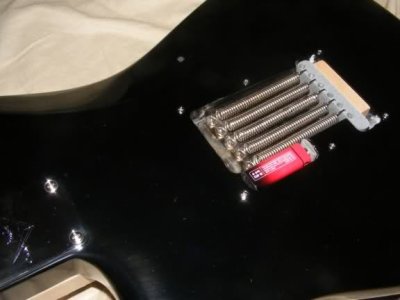Hello everybody. I'm a new member but I've been sponging off you guys for many years 
I have a '98 yjm with a vintage tremolo, of course, and I went to two straight springs on the outside; and the bends feel a little easier. But since I didn't screw down the claw and left everything the same, when I tuned up i got a very high float, as would be expected.
now, with the claw screwed down a lot and the springs so to speak pre-tensioned, when I tune I'll have a low float; but with the claw backed out and the springs not pretensioned, when I tune up I'll get a high float; but in either case the springs will ultimately be at the same tension at a given tuning and so bendability should be the same in either case, correct? Same with the truss rod: regardless claw in or out or high float or low float, the tension on the neck has to be the same at a given tuning.
Well I'm asking because I did screw down the claw and lower the float and I'd swear it feels like the bending is a little harder, but my brain is telling me that's not possible. (FYI I adjusted the saddles so string height is the same in either case and so not a factor)
Can you guys settle this for me? Sorry, not exactly 'a soup question' for my first post 0
0
I have a '98 yjm with a vintage tremolo, of course, and I went to two straight springs on the outside; and the bends feel a little easier. But since I didn't screw down the claw and left everything the same, when I tuned up i got a very high float, as would be expected.
now, with the claw screwed down a lot and the springs so to speak pre-tensioned, when I tune I'll have a low float; but with the claw backed out and the springs not pretensioned, when I tune up I'll get a high float; but in either case the springs will ultimately be at the same tension at a given tuning and so bendability should be the same in either case, correct? Same with the truss rod: regardless claw in or out or high float or low float, the tension on the neck has to be the same at a given tuning.
Well I'm asking because I did screw down the claw and lower the float and I'd swear it feels like the bending is a little harder, but my brain is telling me that's not possible. (FYI I adjusted the saddles so string height is the same in either case and so not a factor)
Can you guys settle this for me? Sorry, not exactly 'a soup question' for my first post

